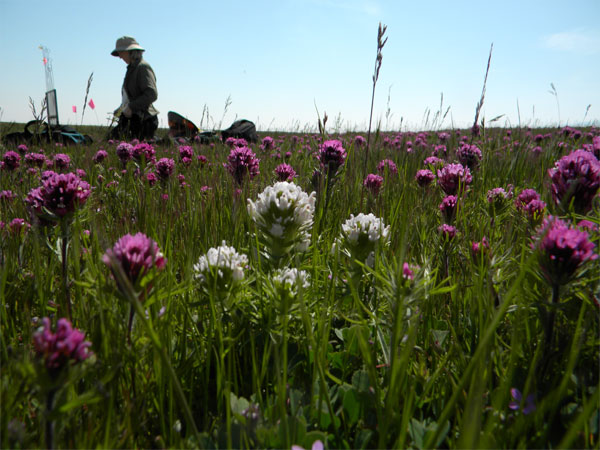 Michele Hammond, Staff Research Associate of the Range Ecology Lab, is using a 10-point frame to measure the vegetation on a plot in the Mojave Desert in April 2010. Photo by Rebecca Wenk
Michele Hammond, Staff Research Associate of the Range Ecology Lab, is using a 10-point frame to measure the vegetation on a plot in the Mojave Desert in April 2010. Photo by Rebecca Wenk
The 270,000-acre Tejon Ranch is the largest, contiguously privately owned parcel in California. It contains portions of five major ecological regions: the southern San Joaquin Valley, the Coast Ranges, the southern Sierra Nevada, the Tehachapi Mountains, and the Mojave Desert. In 2008, California conservation leaders and the Tejon Ranch Company signed the Tejon Ranch Conservation and Land Use Agreement, which protected 240,000 of the 270,000 acres from development and created the Tejon Ranch Conservancy to manage the conserved Ranch lands for native species and biodiversity.
California grasslands change dramatically over space and time, seasonally, annually, and from one ecological region to another. Because of its size and location, Tejon Ranch is an optimal laboratory in which to study spatial and temporal variation in California grasslands. PhD student Sheri Spiegal and the UC Berkeley Range Ecology Lab, under the leadership of Professor James Bartolome, are measuring vegetation change across space and time in Tejon Ranch’s grasslands and isolating environmental factors driving the change. The Lab’s findings will inform the science-based management of the Tejon Ranch Conservancy.
